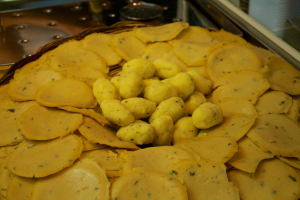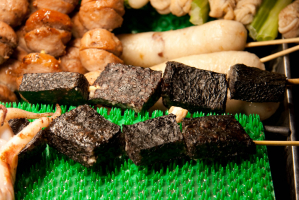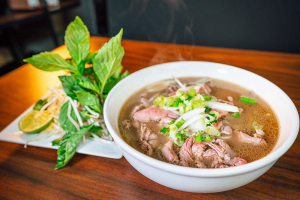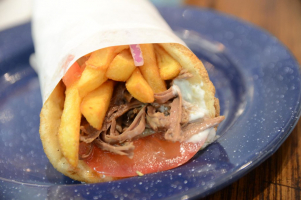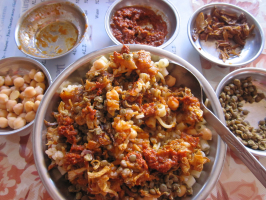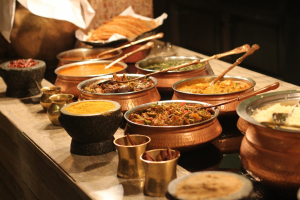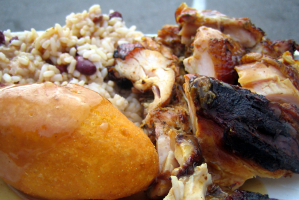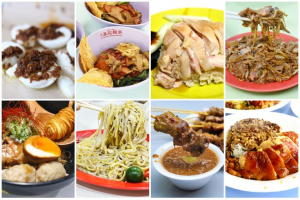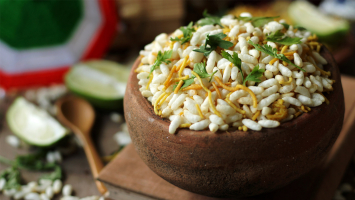Top 12 Most Popular Italian Street Foods
Do you want to try the most famous Italian street foods? Italian street foods delight the senses. From the savory Arancini's crispy rice balls to the classic ... read more...Panini, each bite offers a taste of Italy's culinary artistry. Explore the beloved Frittelle, sweet morsels of delight, and the iconic Gelato, a creamy delight known worldwide. These street foods tell stories of Italy's rich gastronomic tradition.
-
The first item on the list of the top 12 most popular Italian street foods is arancini, often called "little oranges" due to their spherical shape and golden hue. They are a cherished and iconic Italian culinary delight that has captivated taste buds and imaginations worldwide. These delectable morsels exemplify the creativity and resourcefulness of Italian cuisine, transforming humble leftover rice into a mouthwatering masterpiece.
The core of arancini's allure lies in their ingenious use of risotto, a traditional Italian rice dish renowned for its creamy texture and rich flavors. This rice is transformed into compact, hand-held orbs, offering both a visual and gustatory delight. The preparation begins with cooked risotto, which is allowed to cool and firm up. This cooled risotto is then shaped into small, spherical parcels, each brimming with the promise of culinary delight.
But what truly sets arancini apart is the exciting array of fillings found within these golden orbs. While the classic version typically includes a luscious ragù (a slow-cooked meat sauce), modern interpretations have led to an explosion of creative possibilities. Mozzarella, peas, mushrooms, saffron, and many other ingredients have found their way into the hearts of these rice balls, enriching them with diverse and compelling flavors.
To seal the deal, arancini are lovingly encased in a crispy breadcrumb crust, which becomes beautifully golden and crunchy when deep-fried to perfection. This outer layer contrasts delightfully with the tender, flavorful core, creating a symphony of textures and tastes in every bite.
The versatility and universal appeal of arancini have transcended borders, making them a cherished and sought-after culinary gem not only in Italy but across the globe. Whether enjoyed as a quick and satisfying street snack, a tantalizing appetizer, or a comforting homemade treat, arancini remains an embodiment of culinary artistry and the passion for food that is synonymous with Italian cooking. Their timeless and tantalizing allure has made them an essential part of the global gastronomic tapestry.
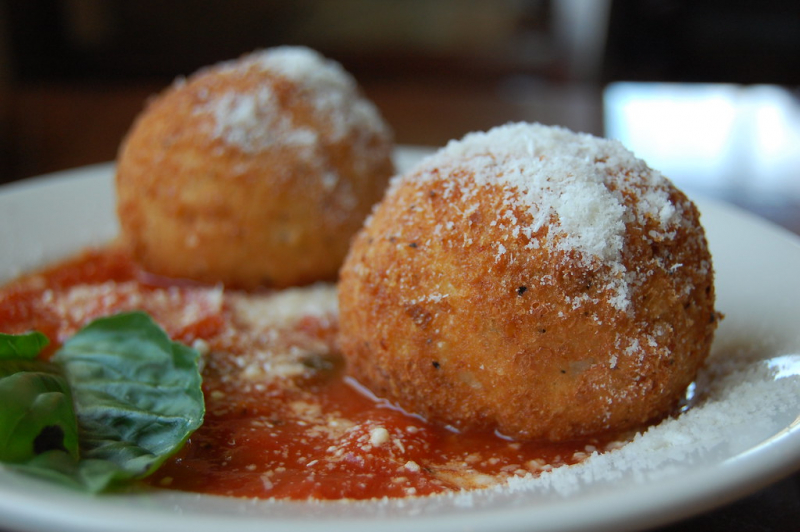
Screenshot of https://www.flickr.com/photos/stuart_spivack/3630055547 Video by Natashas Kitchen -
Panini, those mouthwatering pressed and grilled sandwiches, have become a beloved icon of the culinary world, enticing food enthusiasts from all walks of life. Originating in Italy, "panini" refers to the plural form of "panino," which means small bread rolls. However, when most people hear "panini," they envision a delicious composition of fresh, flavorful ingredients sandwiched between two slices of crusty bread, typically made from ciabatta or baguette, and then expertly toasted to perfection.
The magic of panini lies in their simplicity, versatility, and universal appeal. These sandwiches are blank canvases upon which many flavors and ingredients can be masterfully layered. Whether you're a carnivore craving the classic combination of ham and cheese, a vegetarian savoring a medley of grilled vegetables and pesto, or an epicurean connoisseur indulging in a panini stuffed with artisanal ingredients, the possibilities are limited only by your imagination.
Panini offers a delightful fusion of textures and flavors. As they are pressed and grilled, the ingredients meld together, and the bread's exterior becomes golden and wonderfully crispy. This transformative process results in a handheld meal that is equally satisfying and convenient, making it perfect for quick lunches, casual dinners, or even hearty snacks.
While panini's origins are deeply rooted in Italy, it has transcended borders to become a global culinary sensation. They embody the idea that great food can be both accessible and gourmet, making them a timeless and cherished addition to the world of sandwiches and fast-casual dining. Whether served from a bustling Italian café or enjoyed at home, panini is a culinary treasure that continues to inspire and delight taste buds worldwide.

Screenshot of https://www.flickr.com/photos/kake_pugh/19560873738 Video by tastyrecipes -
Pizza al Taglio, a delectable and distinct style of pizza, hails from the vibrant streets of Italy, where it has earned its place as a beloved and iconic culinary tradition. The name "Pizza al Taglio" translates to "pizza by the cut" or "pizza by the slice," which aptly describes the unique way it's prepared and served. Unlike the classic round pizzas we often associate with Italy, this style is rectangular or square, and it is characterized by its thick, airy, and focaccia-like crust.
What sets Pizza al Taglio apart, aside from its shape, is the versatility it offers. It's a canvas for culinary creativity, with a myriad of toppings that go beyond the traditional tomato sauce and mozzarella. When you approach a pizza al taglio shop, you'll be greeted by an array of options featuring diverse ingredients such as seasonal vegetables, cured meats, creamy cheeses, and aromatic herbs.
The hallmark of Pizza al Taglio is its unique preparation and presentation. Typically, the dough is left to ferment and rise for an extended period, resulting in a light and airy interior, while the outer crust remains delightfully crispy. The final product is baked in large rectangular trays, then cut into square slices and sold by weight. This serving style is ideal for on-the-go eating, as customers can choose their desired portion size and mix and match different flavors to their heart's content.
Pizza al Taglio has not only been embraced across Italy but has also found its way into international culinary scenes, charming people with its delightful interplay of textures and flavors. Whether enjoyed as a quick snack, a satisfying meal, or a flavorful journey through Italy's gastronomic wonders, Pizza al Taglio remains an enduring symbol of Italian culinary ingenuity and a beloved slice of life that continues to captivate pizza lovers around the world.

Screenshot of https://www.flickr.com/photos/aya80904/20928831562 Video by Massimo Nocerino Pizza Massimo -
Supplì, an irresistible Roman street food classic, represents the epitome of Italian culinary ingenuity. These delectable rice croquettes are not just a dish; they are a cultural emblem of Italy's rich and diverse gastronomic heritage. The name "Supplì" itself derives from the French word "surprise," and biting into one is indeed a delightful revelation.
At its heart, Supplì is a humble dish, born out of the need to utilize leftover risotto, the creamy and flavorsome rice dish celebrated across Italy. This ingenious repurposing transforms the cold risotto into small, compact orbs, elevating it to a culinary masterpiece.
The magic of Supplì is in its filling; the rice balls are typically stuffed with a rich and hearty ragù, echoing the essence of Italian comfort food. However, the filling possibilities are as diverse as the country, with variations that include mozzarella, mushrooms, peas, and even prosciutto.
But what truly sets Supplì apart is its crispy exterior. The rice balls are coated in breadcrumbs, which become golden and crunchy when deep-fried. This results in a sublime contrast between the crispy shell and the luscious, flavorful interior, making each bite a delicious journey through both texture and taste.
Supplì is not just about food; it embodies Italian culture and creativity. It embodies the Italians' ability to turn leftovers into something extraordinary, a philosophy that echoes the essence of Italian cuisine.
As one of the most beloved street foods in Rome and beyond, Supplì is a testament to the enduring charm and adaptability of traditional recipes. Its legacy is not only local but has also found its way into international culinary scenes, captivating the hearts and palates of food lovers worldwide.
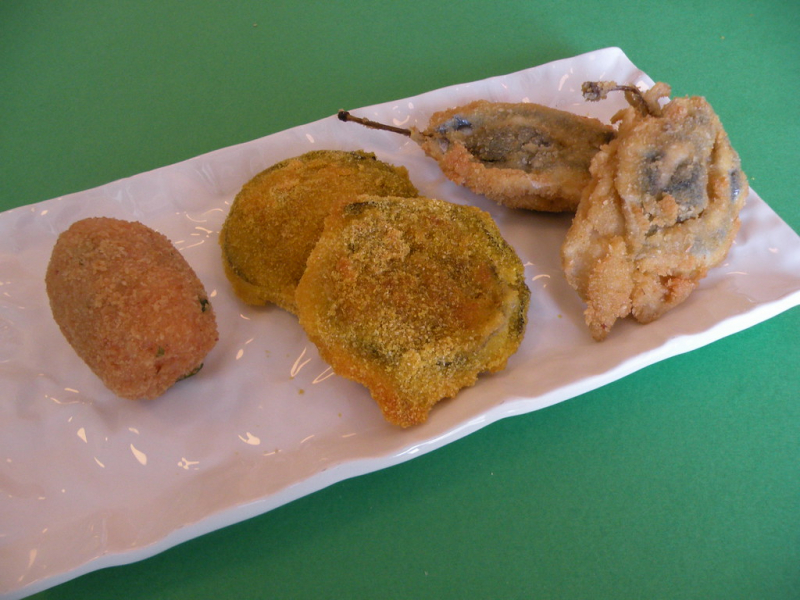
Screenshot of https://www.flickr.com/photos/chefpercaso/7152393389/ Video by GNAM ITALIAN RECIPES -
5th position in the list of the top 12 most popular Italian street foods is Cecina, a culinary treasure rooted in the heart of Italy. Cecina is a simple yet incredibly flavorful dish with a special place in Italian cuisine. Also known as Farinata in some regions, this savory flatbread encapsulates the essence of the Mediterranean, embodying both history and a delicious tradition that spans centuries.
Cecina's history can be traced back to the coastal regions of Italy, particularly Liguria and Tuscany. Its origins are humble, crafted from a basic mixture of two primary ingredients: chickpea flour and water. The result is a thin, unleavened, and gluten-free flatbread that boasts a delicate balance of crispy edges and a soft, custard-like interior.
The preparation process involves creating a thin batter by mixing chickpea flour and water with olive oil and seasoning. This mixture is then generously poured onto a hot, oiled surface and baked to perfection.
What truly sets Cecina apart is its ability to transcend simplicity. The marriage of chickpea flour and a hot oven yields a flavorful canvas that can be customized with various seasonings, such as rosemary, black pepper, and even thinly sliced onions. The result is a harmonious blend of flavors with a satisfying, slightly nutty taste and a creamy interior encased in a crispy, golden crust.
Cecina's appeal extends beyond its timeless recipe; it resonates with those who appreciate the beauty of uncomplicated yet exquisite food. Whether enjoyed as a snack, a quick meal, or an accompaniment to other dishes, Cecina's charm lies in its authenticity, delivering a taste of the Italian coastline with every bite. With a history that dates back to ancient times and contemporary popularity that reaches across borders, Cecina stands as a testament to the enduring allure of rustic, traditional cuisine in the modern world.
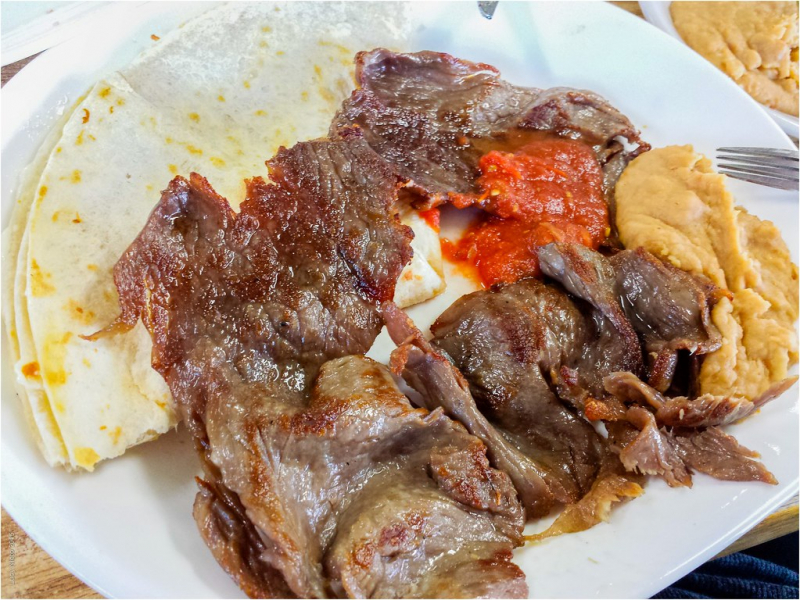
Screenshot of https://www.flickr.com/photos/lucynieto/19999872666 Video by Athina Vasiliadou -
Panzerotti, those delightful and versatile Italian-stuffed pastries, offers a delectable taste of Italy's culinary ingenuity. Hailing from the southern regions of the country, particularly Apulia and Campania, panzerotti have secured a cherished spot in Italian cuisine and have become a beloved treat worldwide.
The name "panzerotto" translates to "little stomach" or "belly," and these small, golden-brown parcels certainly live up to their name, encapsulating a world of flavors within their fold. At first glance, they may resemble small calzones, but what sets panzerotti apart is their distinct preparation and unique filling possibilities.
Panzerotti is crafted from a simple, yeasted dough rolled into small, circular discs. These discs are then folded over to create a half-moon shape, sealing the edges to keep the filling intact.
The defining moment in the preparation of panzerotti is when these little pockets of delight are deep-fried until they achieve a beautiful, golden crispiness. The result is a tantalizing contrast between the crunchy exterior and the soft, flavorful interior, making each bite a symphony of textures and tastes.
Panzerotti are not just a culinary delight; they also represent the Italian spirit of sharing, as family and friends often enjoy them. These savory pastries are commonly served at gatherings, festivals, and pizzerias, where they bring people together over their universal love for good food.
Panzerotti's appeal reaches far beyond Italian shores, making them a sought-after treat for anyone searching for a portable, satisfying, and flavorful snack. Their enduring popularity is a testament to the timeless charm of Italian cuisine and its ability to create delightful, hand-held masterpieces that transcend borders and cultures.

Screenshot of https://www.flickr.com/photos/andreafis/582007218 Video by Cookist Wow -
Porchetta, a mouthwatering and aromatic Italian delicacy, epitomizes the essence of traditional Italian cuisine. This iconic dish is a labor of love passed down through generations, celebrated for its irresistible blend of flavors and cultural significance in Italy.
Porchetta is a succulent, boneless roast pork meticulously prepared and seasoned with a tantalizing mixture of aromatic herbs, spices, and seasonings. While its origins are somewhat debated, porchetta has strong historical ties to central Italy, especially the regions of Lazio, Umbria, and Tuscany, where it has long been a staple of regional cuisine.The preparation of porchetta involves the selection of a high-quality pork cut, traditionally from the whole pig, which is deboned and carefully seasoned with a fragrant mixture of ingredients that often include garlic, rosemary, fennel, and other regional herbs and spices.
Porchetta is a beloved Italian classic, served in various ways. It can be found as a centerpiece at festive gatherings and local food festivals, where it's often carved and served as a sandwich or on a platter with accompanying sides. The aroma of porchetta roasting in the open air is a sensory experience that has lured food lovers for generations.
The timeless appeal of porchetta lies in its rich history and ability to capture the essence of traditional Italian cooking, offering a mouthwatering blend of savory, herbaceous, and smoky flavors. It continues to be a source of pride and delight for Italians and a culinary treasure that has gained recognition and appreciation well beyond the borders of Italy.
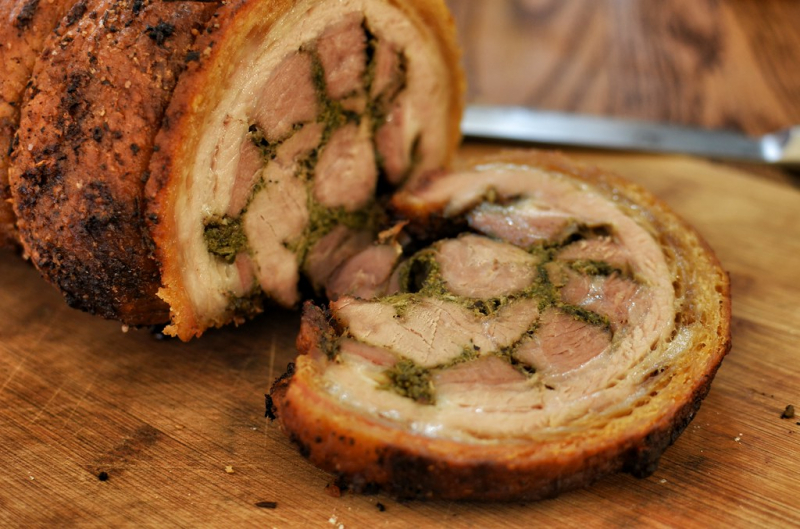
Screenshot of https://www.flickr.com/photos/jeffreyww/32915228606 Video by Jamie Oliver -
Frittelle, these delectable, bite-sized morsels offer a sweet taste of Italy that embodies centuries of culinary tradition and regional charm. Hailing from the heart of Italian cuisine, these fried pastries, known as "frittelle," have captured the hearts and taste buds of Italians and food enthusiasts around the world.
The term "frittelle" itself encompasses a wide variety of fried treats found in different regions of Italy, each with its unique flavor and character. These delightful morsels symbolize the Italian love for indulgent, sweet pleasures, often enjoyed during festive celebrations and special occasions.
What distinguishes frittelle from other pastries is their versatility and the local variations that have developed over time. From Venice's delicate and powdered sugar-coated fritole to the ricotta-filled zeppole of Naples, each region adds its own distinctive touch to these delightful treats.
The making of frittelle is a labor of love, typically involving the combination of flour, sugar, eggs, and other ingredients, such as raisins, candied fruit, or citrus zest, depending on the regional recipe. The resulting batter is deep-fried to perfection, rendering a delectable contrast between the crispy outer layer and the tender, flavorful core.
Frittelle is not just about satisfying a sweet tooth; it represents the Italian appreciation for simple yet irresistible desserts. These treats are a beloved part of Italy's culinary heritage and are often enjoyed during special times like Carnival and year-round.
They embody the essence of Italy's festive spirit, and their wide array of regional variations is a testament to the diversity and creativity of Italian cuisine. As they continue to capture the imagination of food lovers worldwide, frittelle remains a timeless and cherished symbol of Italian indulgence and hospitality.

Screenshot of https://www.publicdomainpictures.net/it/view-image.php?image=64999&picture=frittelle Video by Chef Francesco Cavazzina -
Sfincione, a delectable and savory Sicilian delight, is a testament to the island's rich and diverse culinary heritage. This rustic and flavorful dish, often referred to as Sicilian pizza, has been enchanting palates for generations and has carved a special place in the hearts of Sicilians and lovers of Italian cuisine worldwide.
The name "sfincione" derives from the Latin "spongia," which means sponge, an apt description of the bread-like base that serves as the foundation for this dish. Sfincione is a distinctive pizza variation in its taste, texture, and regional identity.
Sfincione consists of a soft, thick, and spongy base, typically made from a simple dough of flour, water, yeast, and a dash of olive oil. The dough is then stretched or pressed into a rectangular or square shape, providing a canvas for the dish's true masterpiece: the sauce.
What sets sfincione apart is its sauce, a rich and savory mixture that includes tomatoes, onions, olive oil, oregano, and sometimes anchovies. This sauce is generously spread over the dough, ensuring that each bite offers a symphony of flavors. The toppings for sfincione can vary but commonly include grated Pecorino cheese and breadcrumbs, providing a delightful contrast of textures and tastes.
Sfincione represents more than just a regional specialty; it embodies the history, culture, and flavors of Sicily. This beloved dish is often enjoyed during festive occasions and celebrations, and its local variations showcase the diversity and creativity of Sicilian cuisine.
Whether sampled in the bustling markets of Palermo or recreated in kitchens around the world, sfincione continues to be a beloved symbol of Sicilian culinary craftsmanship and an invitation to savor the island's vibrant, rich flavors.
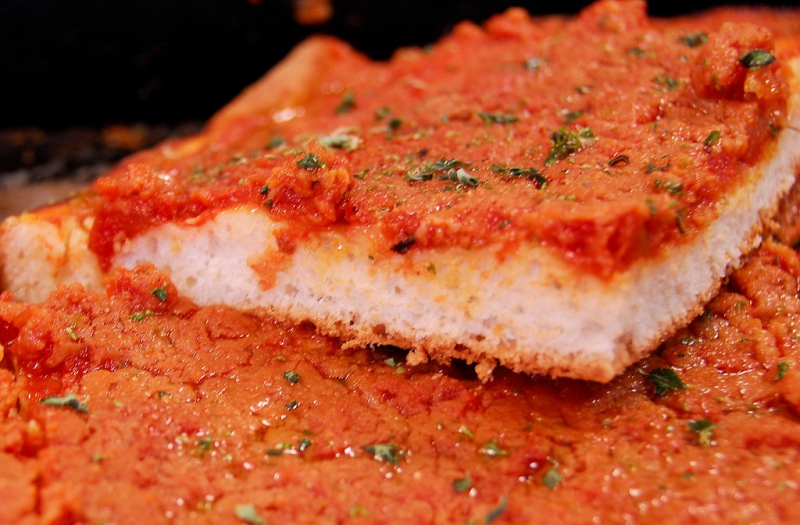
Screenshot of https://www.flickr.com/photos/80267449@N00/7837541572 Video by Sip and Feast -
Gelato, the luxurious and enchanting Italian ice cream, is a beloved culinary masterpiece that has captivated the world with its rich history and unforgettable flavors. Originating in Italy, gelato has transcended borders to become an internationally recognized symbol of Italian cuisine, offering a delicious escape into the heart of the Mediterranean.
What sets gelato apart from traditional ice cream is its composition and the artisanal craftsmanship involved in its creation. Gelato is made with a higher proportion of milk to cream, resulting in a lower fat content than its American counterpart. This careful balance creates a lighter, creamier, and more intensely flavored frozen dessert that is both luscious and refreshing.
The history of gelato began in ancient Rome when emperors and the upper class consumed it. Over the centuries, this Italian delight has evolved and adapted, but its commitment to quality ingredients and craftsmanship remains unwavering.
The core of gelato's charm lies in its preparation, with skilled artisans churning small batches using time-honored techniques that infuse the mixture with an air of sophistication. Gelato comes in an extensive array of flavors, ranging from classic options like stracciatella, pistachio, and hazelnut to innovative combinations that reflect local and seasonal ingredients.
The allure of gelato extends beyond its delightful taste and texture; it represents Italy's commitment to embracing life's pleasures and sharing them with others. Whether enjoyed on a leisurely stroll through the cobblestone streets of Rome or savored on a sunny afternoon in your local gelateria, gelato embodies the spirit of dolce vita, inviting us to savor the sweet moments in life.
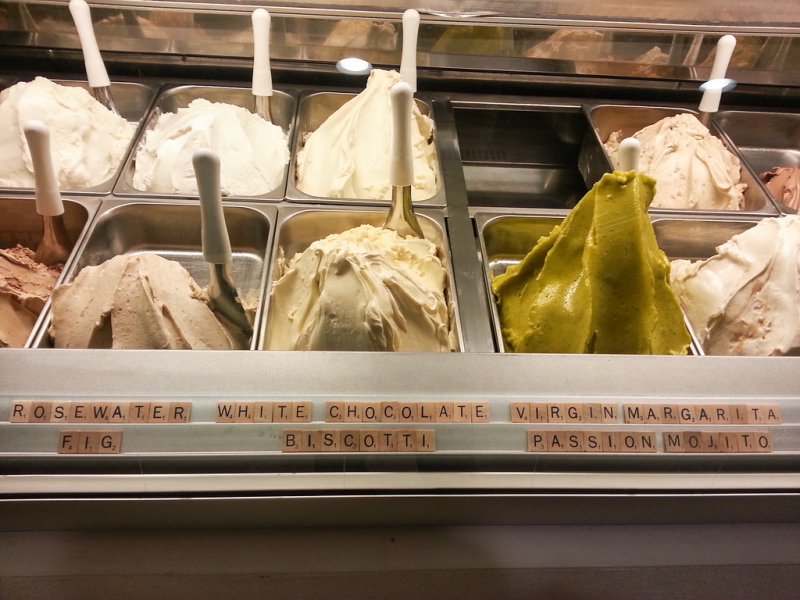
Screenshot of https://www.flickr.com/photos/zokuga/8278455005/ Video by Insider Food -
Cannoli, the iconic Italian pastry, embodies a sweet and delightful tale of tradition and flavor. These delectable treats are celebrated worldwide for their crisp, golden shells and luscious, creamy fillings. Originating in Sicily, cannoli have transcended borders to become a beloved dessert in Italian cuisine.
At first glance, a cannolo is a masterpiece of contrast: a delicate, flaky tube-like shell that crumbles upon the first bite, revealing a velvety, sweet ricotta-based filling. Yet, behind this simplicity lies a complex historical and cultural significance. The word "cannolo" itself means "little tube" in Italian, alluding to its characteristic shape.
Cannoli has a rich heritage, with roots tracing back to the Arab influence on Sicilian cuisine during the Middle Ages. The combination of crispy pastry and creamy filling captures the essence of the Mediterranean, blending flavors and textures into an enchanting dessert. Over the centuries, cannoli have become synonymous with celebrations, especially in the vibrant context of Italian festivals and family gatherings.
This pastry's fame extends far beyond Italy, as it has found a cherished place in the hearts of dessert enthusiasts worldwide. The art of crafting the perfect cannoli is a true culinary marvel, a harmony of tradition, innovation, and passion that continues to bring delight to those who savor its sweet embrace. In this exploration, we shall delve deeper into the fascinating history, cultural significance, and delightful variations of cannoli that make it an enduring symbol of Italian indulgence.

Screenshot of https://commons.wikimedia.org/wiki/File:Focaccia_o_schiacciata_di_patate.jpg Video by Preppy Kitchen -
The final position in the list of the top 10 most popular Italian street foods is Focaccia, the beloved Italian flatbread, a culinary masterpiece that transcends the boundaries of simple bread. With its roots in ancient Roman cuisine and a history that stretches back over two millennia, focaccia is not just a food but a testament to the enduring traditions and creativity of Italian baking.
At first glance, focaccia appears unassuming—a flat, dimpled bread topped with a tempting array of ingredients like olive oil, fresh herbs, and sometimes even cheese or vegetables. However, beneath this unpretentious surface lies a captivating journey through time and taste.
"focaccia" derives from the Latin word "panis focacius," which refers to bread baked on the hearth or open flames. This early incarnation of focaccia was the precursor to the delightful, versatile bread we know today. It was cherished for its combination of a tender crumb and a crisp, olive oil-infused crust.
Focaccia is an integral part of Italian culinary heritage, often made with regional variations that reflect the diverse landscapes and tastes of the country. This bread can be found gracing tables from the sun-soaked shores of Liguria to the bustling piazzas of Rome and beyond, each locale adding its unique touch to the recipe.
The irresistible aroma of focaccia baking in the oven is enough to evoke memories of Italy, and its diverse toppings are a canvas for creativity, from the simplicity of rosemary and sea salt to the decadence of sun-dried tomatoes and caramelized onions.
Focaccia represents a culinary experience that invites exploration and celebration, a testament to the time-honored craftsmanship of Italian bakers and the everlasting allure of this humble yet extraordinary bread.
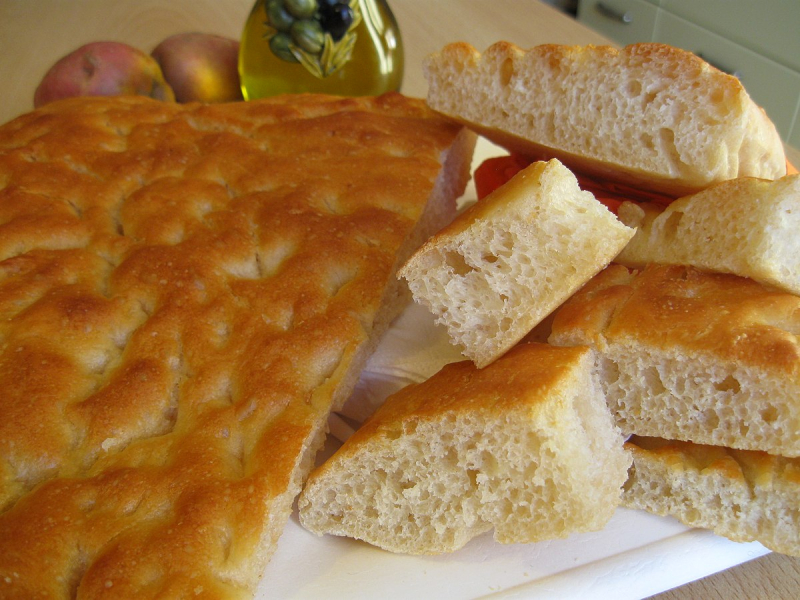
Screenshot of https://commons.wikimedia.org/wiki/File:Focaccia_o_schiacciata_di_patate.jpg Video by Kitchen & Craft














